Russian Civil Aviation: News #5

Hole- Posts : 11122
Points : 11100
Join date : 2018-03-24
Age : 48
Location : Scholzistan
- Post n°326
 Re: Russian Civil Aviation: News #5
Re: Russian Civil Aviation: News #5
GarryB, kvs, JohninMK, Sprut-B, mnztr, lancelot and Scorpius like this post

Hole- Posts : 11122
Points : 11100
Join date : 2018-03-24
Age : 48
Location : Scholzistan
- Post n°327
 Re: Russian Civil Aviation: News #5
Re: Russian Civil Aviation: News #5
GarryB, kvs, Sprut-B, mnztr, LMFS and lancelot like this post

Hole- Posts : 11122
Points : 11100
Join date : 2018-03-24
Age : 48
Location : Scholzistan
- Post n°328
 Re: Russian Civil Aviation: News #5
Re: Russian Civil Aviation: News #5
GarryB, kvs, Sprut-B, LMFS, lancelot and Rasisuki Nebia like this post

par far- Posts : 3496
Points : 3741
Join date : 2014-06-27
- Post n°329
 Re: Russian Civil Aviation: News #5
Re: Russian Civil Aviation: News #5
When compared to the Boeing and the Airbus equivalents, how is it on fuel? Will this depend on the engines it is using? The Boeing and Airbus equivalents use only two engines.
Are there interior pictures of the Il-96-400M? I would love to see the cockpit and the interior of the modernized Il-96-400M.
Thanks in advance.

lancelot- Posts : 3175
Points : 3171
Join date : 2020-10-18
- Post n°330
 Re: Russian Civil Aviation: News #5
Re: Russian Civil Aviation: News #5

Since this is a test aircraft I doubt it has the seats for the passengers installed.
As for the fuel consumption, it has little to do with the number of engines, but more to do with the engine design and technology level. I would assume the engines have a similar level of fuel consumption to the CFM56 family. Just because this aircraft has more seats than the Il-96-300 it means the fuel cost per seat mile should be lower than that aircraft.
The main advantage of having less engines is that with less parts there is less to inspect and maintain. So it should reduce maintenance costs. But not necessarily fuel costs. The thing is the PS-90 is at this point a generation behind leading engines.
par far, kvs, Rodion_Romanovic, Sprut-B and Hole like this post

Rodion_Romanovic- Posts : 2654
Points : 2823
Join date : 2015-12-31
Location : Merkelland
- Post n°331
 Re: Russian Civil Aviation: News #5
Re: Russian Civil Aviation: News #5
par far wrote:Couple of questions about the Il-96-400M.
When compared to the Boeing and the Airbus equivalents, how is it on fuel? Will this depend on the engines it is using? The Boeing and Airbus equivalents use only two engines.
Thanks in advance.
It will use more fuel:
- not only it has 4 engines (which will increase partially the consumption, but especially maintenance costs)
- but the engines are also at least one generation older, with a considerably higher (probably around 15~20%) specific fuel consumption (fuel consumption divided by thrust) in comparison to the RR Trent or GE engines available on the current airbus and Boeing widebodies
It is not a huge issue however. At least for Russia which is an oil exporter. The increased expenses due to the higher fuel consumption can be covered by some fuel subsidies from the state (also for private Russian airlines like S7, should they decide to buy some il-96).
Ah, concerning the fuselage, some people say that the il-96 is sharing the same fuselage as the il-86.
Well, the A330Neo is sharing the fuselage with the A300 (introduced in 1974)
P.S.
By the way the PS90 engines frontal surface is much smaller and they offer less drag, so the loss in performance in comparison to the latest western engines will be at least in small part mitigated by a reduced drag.
GarryB, par far, kvs, Sprut-B, Hole and owais.usmani like this post

Hole- Posts : 11122
Points : 11100
Join date : 2018-03-24
Age : 48
Location : Scholzistan
- Post n°332
 Re: Russian Civil Aviation: News #5
Re: Russian Civil Aviation: News #5
If the company wants a widebody airliner this is there only choice.should they decide to buy some il-96
Boebus are under sanctions.
sepheronx, GarryB, kvs, Sprut-B, owais.usmani, lancelot and Broski like this post

lancelot- Posts : 3175
Points : 3171
Join date : 2020-10-18
- Post n°333
 Re: Russian Civil Aviation: News #5
Re: Russian Civil Aviation: News #5
CFM56-5C specific fuel consumption: 0.545 lb/lbf/h, bypass ratio: 6.5
PD-14M specific fuel consumption: 0.526 kg/kgf/h, bypass ratio: 7.2
This should give you some idea with regards to engine fuel consumption. The first is the engine in the Il-96, the second is the engine in the Airbus A340, and the last is an engine in the Aviadvigatel PD-14 family which is supposed to have enough thrust to power the Il-96 but which still isn't available.
But there is more to it than fuel consumption. Since an aircraft with more modern airframe materials could also weigh less for example.
kvs likes this post

owais.usmani- Posts : 1827
Points : 1823
Join date : 2019-03-27
Age : 38
- Post n°334
 Re: Russian Civil Aviation: News #5
Re: Russian Civil Aviation: News #5
Scorpius wrote:
You think is complietely wrong, because photos of the assembly of the new fuselage have been posted on the network for a long time.
Yes, you are right, my mistake. I thought it was this one which they took out from storage earlier this year: https://www.russiadefence.net/t8855p100-russian-civil-aviation-news-5#422302

GarryB- Posts : 40546
Points : 41046
Join date : 2010-03-30
Location : New Zealand
- Post n°335
 Re: Russian Civil Aviation: News #5
Re: Russian Civil Aviation: News #5
For instance the MiG-29 has two 8 ton thrust engines while the single engined F-16 has a single engine of about 13 tons thrust.
When in normal cruise flight it might take 2 or three tons of engine thrust to maintain speed and altitude for a given aircraft, but with a single engined aircraft all that energy has to come from the one engine, whereas the aircraft with two engines can provide half that thrust from each engine.
Fuel consumption is per gramme of fuel per kilogramme of thrust so the same generation aircraft engine burning the same fuel rate would use the same amount of fuel... the 13 ton thrust jet engine in the F-16 running at 3 tons thrust would not use a lot less fuel than a MiG-29 with two 8 ton thrust engines each running at 1.5 tons thrust each.
As western aircraft wont be an option for Russian airlines for the foreseeable future and they will likely draw down the numbers of foreign aircraft they operate to eventually not using them at all suggests fuel consumption is the least of their concerns.
Russia is not going to run out of fuel.
Edit: ironically the west throwing Stingers at Kiev like lollies we can expect the proliferation of MANPADS around the world is going to be a real problem moving forward... where only having two engines might make you rather vulnerable too.
kvs likes this post

Rodion_Romanovic- Posts : 2654
Points : 2823
Join date : 2015-12-31
Location : Merkelland
- Post n°336
 Re: Russian Civil Aviation: News #5
Re: Russian Civil Aviation: News #5
Same thing will be true for an eventual il-96 neo in a quad jet configuration with PD16/PD18 engines vs a twin engine version with 2 PD35.
Actually unless both engines are targeted at the same time, just losing one engine in a modern twin jet like A350 or Boeing 787 does not signify loss of control or impossibility to fly. Such aircrafts are designed and certified so that even the loss of one engine in the middle of the takeoff does not compromise the safety of the takeoff (that means that the remaining engine must have enough extra "power" to allow a safe continuation of the takeoff, albeit with reduced performance).GarryB wrote:ironically the west throwing Stingers at Kiev like lollies we can expect the proliferation of MANPADS around the world is going to be a real problem moving forward... where only having two engines might make you rather vulnerable too.
The aircrafts are also ETOPS qualified,
ETOPS = extended Range Twin Operations approval
it permits twin-engined aeroplanes to operate over a route that contains a point further than one hour flying time at the approved one-engine inoperative cruise speed.
And in the case of modern widebody twin engine aircrafts usually they are able to obtain a higher than ETOPS-180 approval (that means that they are able to fly safely for up to 180 minutes (3 hours) (or even more in the case of a higher approval rating) with one engine inoperative (as long as the engine was shut down safely and did not damage the aircraft).
Furthermore if targeted by a man pad like a stinger the explosion may also damage a large part of the wings and the hydraulic systems, making the aircraft very difficult to control.
Maybe now more airlines will have to do like the Israel flag carrier el Al and equip their passenger planes with missile defense systems to protect them against surface-to-air missiles.
kvs likes this post

kvs- Posts : 15858
Points : 15993
Join date : 2014-09-11
Location : Turdope's Kanada
- Post n°337
 Re: Russian Civil Aviation: News #5
Re: Russian Civil Aviation: News #5
The maintenance costs are driven by the frequency of parts wear and not just the number of engines. For Russia such costs should not
be an issue. The fixation on them smells of the usual squeeze water out of a rock profit model of western corporations. If they could
sell shit in in tinfoil to you, then they would. The cost of operating an aircraft is the fuel and the pilots. Engine maintenance is not the
top of the list.
GarryB and Hole like this post

GarryB- Posts : 40546
Points : 41046
Join date : 2010-03-30
Location : New Zealand
- Post n°338
 Re: Russian Civil Aviation: News #5
Re: Russian Civil Aviation: News #5
The lower fuel efficiency of the older Russian engines is largely compensated for by the fact that most western engines are horrifically expensive and not available any more so it doesn't matter how much fuel they use... Russia is not running out.
The new engines they are developing and did develop like the engines they developed for the Il-106 that the west did everything they could to get cancelled because it was a better engine, should eliminate any gaps that might have existed.
Yes, of course they claim twin engined jets are safe and have to be proven to be safe but to be safe they would need a thrust margin that allows much lower takeoff weights which means less passengers and less fuel which would cost money.
I would bet money the tests were done at weights that are not practised by the industry so they can make more money.
Look at the 767MAX debacle... safe? Not really.
And if you were shooting down an airliner why would you only launch one missile at it?
kvs, Hole and Broski like this post

Rodion_Romanovic- Posts : 2654
Points : 2823
Join date : 2015-12-31
Location : Merkelland
- Post n°339
 Re: Russian Civil Aviation: News #5
Re: Russian Civil Aviation: News #5
kvs wrote:Russia should get a PD-18 variant and use 4 of them on the IL-96. It looks like the cheapest upgrade even to existing aircraft.
Unfortunately there are no news on that engine variant.
Russia had to put extra effort also on PD-8 and probably will soon try to do something to increase further production capabilities for the PD-14.
They already announced a delay of a couple of years for the PD-35 due to the need for resources on other programs (like PD-8 ).
So either the PD16 and PD18 have been completely concealed from the public and been developed and tested in secret, or the only variant that will see in the next couple of years will be the PD14M (also because no tests for different variants of the engine have been advertised).
In the meanwhile there is still quite a bit of work for the MC-21.
My understanding is that Aeroflot will see its first 6 MC-21 aircrafts only in the first part of 2025.
https://aviationweek.com/aerospace/manufacturing-supply-chain/russias-exit-cr929-jv-underlines-sanctions-impact
The MC-21 program gained approval for the Russian PD-14 turbofans and a Russian-made composite wing in December 2022 but still needs to replace many other Western systems, including actuators, avionics and air conditioning, Gaidansky explained.
He said the MC-21 prototype with 70% substituted Western-made equipment would fly beginning in December 2023. The fully import-substituted version, dubbed MC-21-310RUS, is to make its first flight in April 2024 and then receive its supplemental type certificate by the end of that year.
Anyway, the twin version of the il-96 could be ready before the c929 and introduced as both a stopgap and technology demonstrator. A brand new Russian widebody benefitting of both the experience with the il96 and the technology of the MC21 could be instead be ready by 2035, in contemporary to the possible airbus A350 Neo (Potential modernisation of the A350, the latest airbus aircraft, which first flew in 2013 and that started commercial operations in 2015)
kvs, JohninMK and Broski like this post

kvs- Posts : 15858
Points : 15993
Join date : 2014-09-11
Location : Turdope's Kanada
- Post n°340
 Re: Russian Civil Aviation: News #5
Re: Russian Civil Aviation: News #5
It is an "easier" variation on the PD-14 than the PD-35. I can understand the PD-8 prioritization since the Superjet is an important class of
aircraft for Russia. The IL-96 is not such a priority and the MC-21 with its PD-14s will fill the role sufficient for Russia's needs. But it looks like there is
too much constriction in the Russian aircraft industry where zero sum games have to be played with projects.

lancelot- Posts : 3175
Points : 3171
Join date : 2020-10-18
- Post n°341
 Re: Russian Civil Aviation: News #5
Re: Russian Civil Aviation: News #5
Aviadvigatel is currently developing the PD-14GP-2 gas turbine, which is basically the PD-16 modified to work with natural gas. They are also developing the PD-14GP-1 gas turbine which is basically the PD-12. The PD-12 and PD-16 are supposed to be used on the MS-21-200 and MS-21-400 projects respectively. The PD-16 could also be used to replace the engines in the Il-96 and Tu-214.
kvs likes this post

GarryB- Posts : 40546
Points : 41046
Join date : 2010-03-30
Location : New Zealand
- Post n°342
 Re: Russian Civil Aviation: News #5
Re: Russian Civil Aviation: News #5
PS-90A specific fuel consumption: 0.595 kg/kgf/h, bypass ratio: 4.4
CFM56-5C specific fuel consumption: 0.545 lb/lbf/h, bypass ratio: 6.5
PD-14M specific fuel consumption: 0.526 kg/kgf/h, bypass ratio: 7.2
You can't really present those numbers as comparable because they use different units... lb/lbf/h is not the same as kg/kgf/h.
Regarding the twin engined wing for the Il-96 taking a bit longer... that is probably a good thing... because it would improve performance, but ultimately it does not matter because the twin engined aircraft has to wait for the engines anyway, which gives them plenty of time to develop new wings.
Would love to see them take a real risk and develop all composite forward swept wings... it will never go supersonic so forward swept wings have only advantages for such an aircraft... lower drag, better lift etc etc... you could make them smaller and they would have minimum wingtip vortex drag because spanwise flow would go inwards to the wing root rather than out to the tip.
It would have significant improvements in performance which would be compounded by the new engines and only having two engines.

Swgman_BK- Posts : 163
Points : 185
Join date : 2022-02-11
- Post n°343
 Re: Russian Civil Aviation: News #5
Re: Russian Civil Aviation: News #5
Russia should get a PD-18 variant and use 4 of them on the IL-96. It looks like the cheapest upgrade even to existing aircraft. wrote:
Plan is to stick 2 PD35s onto the Il-96 going forward
GarryB, Rodion_Romanovic and owais.usmani like this post

lancelot- Posts : 3175
Points : 3171
Join date : 2020-10-18
- Post n°344
 Re: Russian Civil Aviation: News #5
Re: Russian Civil Aviation: News #5
This video shows the cockpit panels for the MS-21 being developed by KRET for import substitution starting at 2:08.
GarryB and Hole like this post

Rodion_Romanovic- Posts : 2654
Points : 2823
Join date : 2015-12-31
Location : Merkelland
- Post n°345
 Re: Russian Civil Aviation: News #5
Re: Russian Civil Aviation: News #5
kvs wrote:The two-engine IL-96 requires all new wings. This is OK but more expensive and will take longer to arrive. It is too bad that there is no news on the PD-18.
It is an "easier" variation on the PD-14 than the PD-35. I can understand the PD-8 prioritization since the Superjet is an important class of
aircraft for Russia. The IL-96 is not such a priority and the MC-21 with its PD-14s will fill the role sufficient for Russia's needs. But it looks like there is
too much constriction in the Russian aircraft industry where zero sum games have to be played with projects.
Russia has already been working for several years on a composite wing for the twin engine widebody CR929, which has similar dimensions as the il-96. I believe a lot of the work spent on it could be reused for a brand new wing for the twin engine derivative of the il-96 and/or for a brand new Russian widebody aircraft, so at least on the wing Russia is not starting from scratch.
Russia should get a PD-18 variant and use 4 of them on the IL-96. It looks like the cheapest upgrade even to existing aircraft
Well the PD16 (or the planned geared turbofan PD-18R) will be for sure useful (also for a il-106 military transport aircraft), but at the moment is less of a priority than other engines. As far as the il-96 in 4 engines version, eventually it could be useful an engine replacement, but the change in engine requires anyway new tests and an update to type certificate.
They can think about it after those engines are certified and after the new engine production will have been ramped up, as those engines will be also needed for the larger and extra long range versions of the MC-21.
Anyway, since we do not know if the PD16 will be available before the PD35 it is possible that the re-engining of the il-96 with 4 turbofans of the latest generation will not happen before the twin engine version is put into service.
Even in that case, if both the il-96 with 4 PD-16 and the new widebody with 2 PD-35 are available it is doubtful that many airline will be interested in the 4 engine version ( basically as now companies are buying A330 but not A340).
When both the twin and four engine version will be available, probably the 4 engine version will be only bought for doomsday planes and for transporting the president.
LMFS likes this post

wilhelm- Posts : 348
Points : 352
Join date : 2014-12-09
- Post n°346
 Re: Russian Civil Aviation: News #5
Re: Russian Civil Aviation: News #5
Swgman_BK wrote:
Plan is to stick 2 PD35s onto the Il-96 going forward
If one looks carefully at the Ill-96 with 4 PS-90 engines, and envisages the replacement of these 4 engines with two larger (PD-35) engines, a couple of things are obvious:
1: Either a modified wing, or a new wing would be needed, simply because of weight and thrust considerations.
2: The landing gear would probably need to be redesigned, or elongated if you will, factoring in the ground clearance needed.
Redesigning or elongating the landing gear would entail repackaging their stowage, leading to redesigning the wing in that area anyway.
You could I suppose redesign the engine pylon to slightly raise the larger engine, ala the Boeing 777, but there would still need to be weight and thrust taken into consideration.
The options I see are a totally redesigned edition of the current wing, or a completely new wing, both probably with slightly longer landing gear.
That would be a decision or choice I am sure they are working on as I type this.
Ill-96 and Ill-98.
Ill-98 has redesigned pylons and repositioned engines at a minimum.
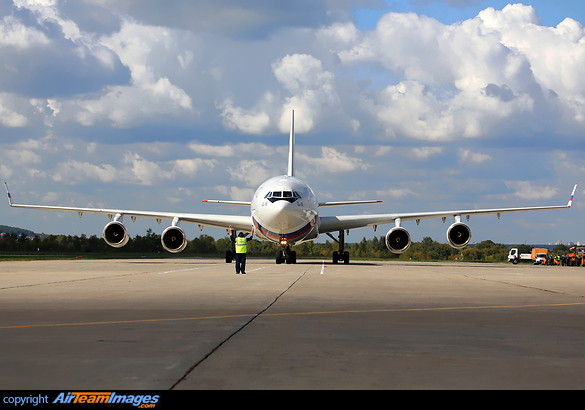
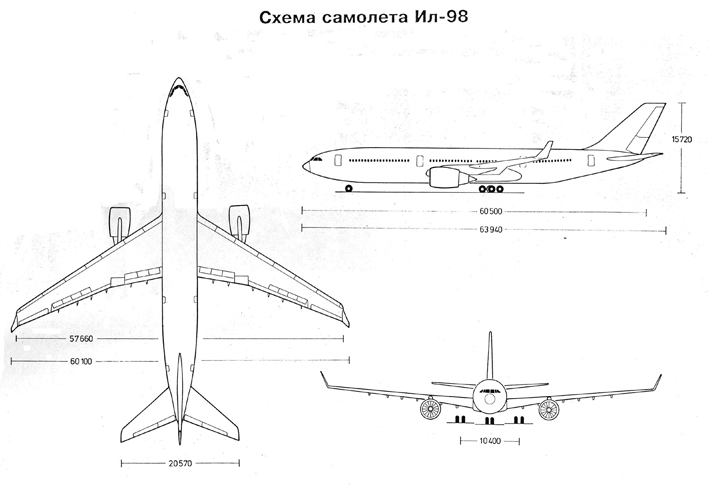
Last edited by wilhelm on Sun Nov 05, 2023 11:07 pm; edited 1 time in total
GarryB, owais.usmani and TMA1 like this post

lancelot- Posts : 3175
Points : 3171
Join date : 2020-10-18
- Post n°347
 Re: Russian Civil Aviation: News #5
Re: Russian Civil Aviation: News #5
It uses ceramic matrix composites and also SiC-SiC, C-SiC materials. It likely can attain a higher operating temperature and should be more efficient than a PD-14 series engine.
GarryB likes this post

wilhelm- Posts : 348
Points : 352
Join date : 2014-12-09
- Post n°348
 Re: Russian Civil Aviation: News #5
Re: Russian Civil Aviation: News #5
But physics determine a higher bypass ratio, larger fan, hence larger diameter, and greater mass.
GarryB likes this post

Rodion_Romanovic- Posts : 2654
Points : 2823
Join date : 2015-12-31
Location : Merkelland
- Post n°349
 Re: Russian Civil Aviation: News #5
Re: Russian Civil Aviation: News #5
Yes but basically while a very high bypass ratio can be the cause of an increased mass and drag of the engines, this disadvantages are more than covered by the improved performance, especially on long range flights. On short range flights instead this advantage is less clear.wilhelm wrote:Of course.
But physics determine a higher bypass ratio, larger fan, hence larger diameter, and greater mass.
This is probably the reason of the lower bypass ratio of the PD-14 engine in comparison to the CFM Leap. PD14 has still anyway a high bypass ratio and it is considerably higher than the previous generation engines
TMA1 likes this post

lancelot- Posts : 3175
Points : 3171
Join date : 2020-10-18
- Post n°350
 Re: Russian Civil Aviation: News #5
Re: Russian Civil Aviation: News #5
The CFM Leap uses composite fan blades. The PD-14 uses the prior generation hollow titanium fan blade technology. The hollow titanium fan blade is way better than the technology used in the Soviet PS-90, it allows substantial weight savings and means you can make larger turbine blade reducing the amount of engine parts. But it is still behind composite fan blades.Rodion_Romanovic wrote:This is probably the reason of the lower bypass ratio of the PD-14 engine in comparison to the CFM Leap. PD14 has still anyway a high bypass ratio and it is considerably higher than the previous generation engines
The PD-35 is supposed to use the modern composite fan blades. Which means it is possible to make larger fan blades for the turbofan with the same weight you would use with the older technologies.
GarryB likes this post

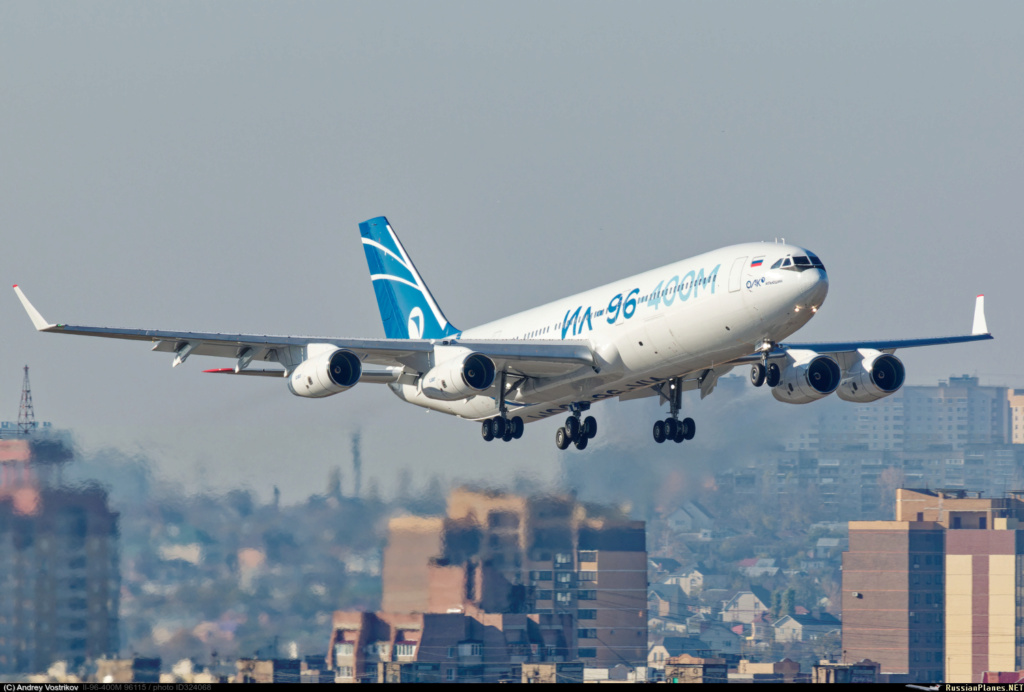



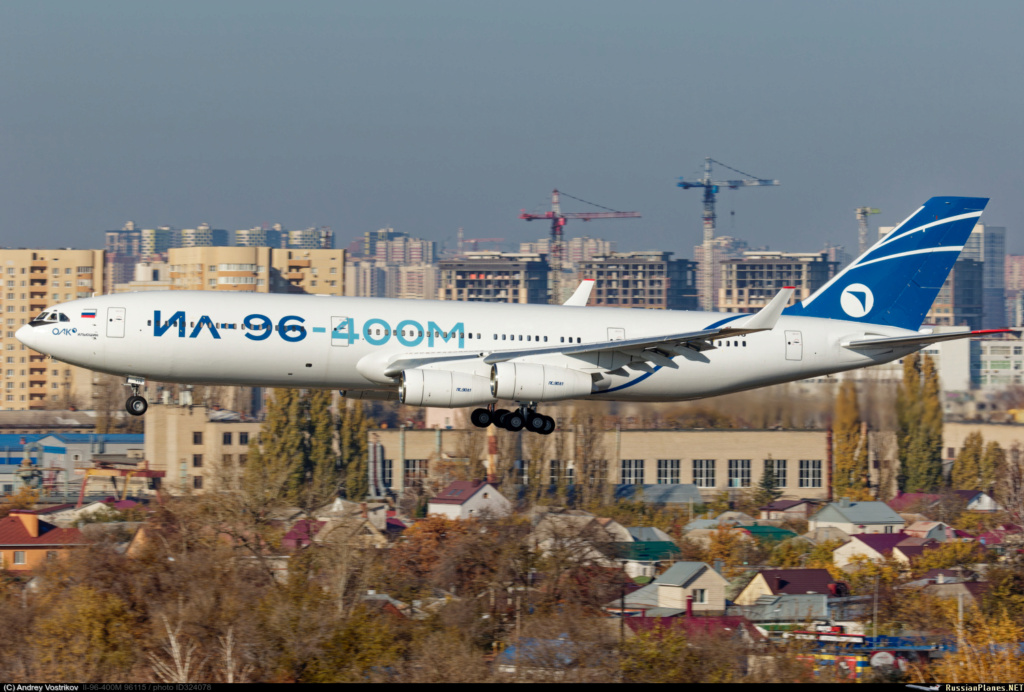


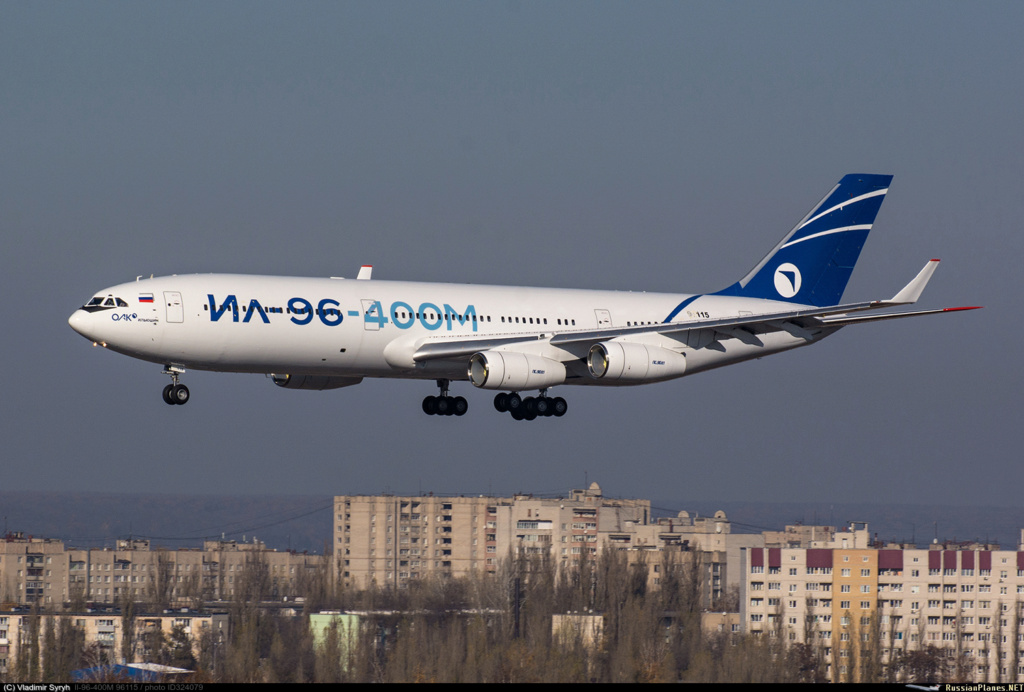
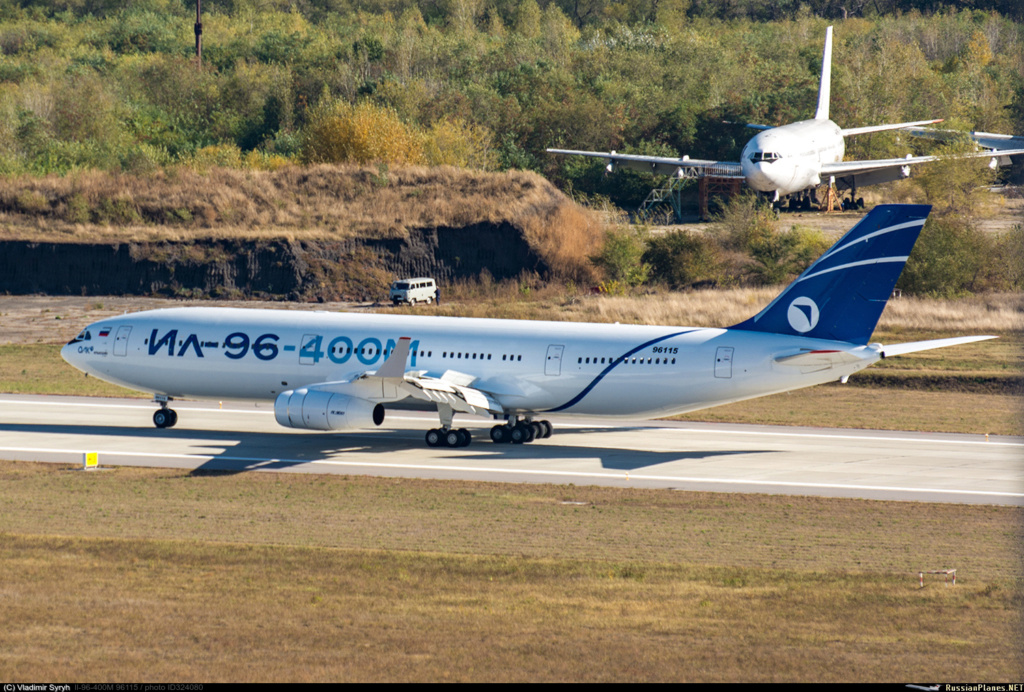
 lancelot
lancelot